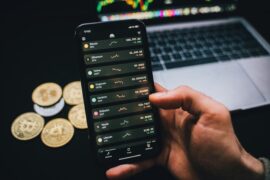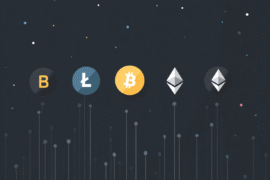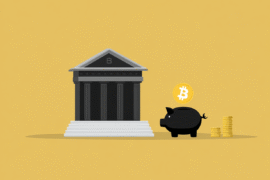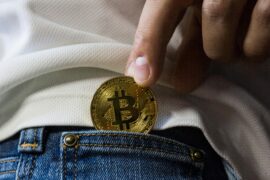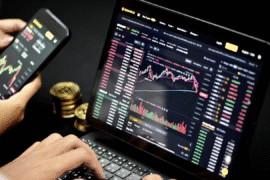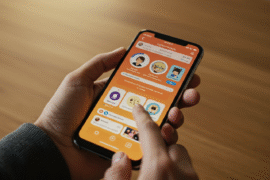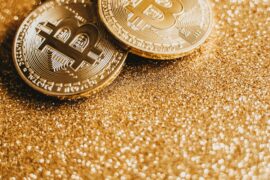This article may contain references to products or services from one or more of our advertisers or partners. We may receive compensation when you click on links to those products or services. Nonetheless, our opinions are our own.
The information presented in this article is accurate to the best of our knowledge at the time of publication. However, information is subject to change, and no guarantees are made about the continued accuracy or completeness of this content after its publication date.
- Key Highlights
- Introduction
- Understanding NFTs and Futureverse’s Involvement
- Conclusion
- Frequently Asked Questions
- Recommended Reads
Key Highlights
- Futureverse, a leader in digital items, has purchased Candy Digital, a well-known NFT startup. This strengthens its presence in the NFT market.
- The acquisition will help Futureverse reach its goal of expanding its product offerings, including trading cards and special NFT collections.
- Candy Digital adds expertise in NFTs, particularly in sports items such as NBA Top Shot, enhancing Futureverse’s collection.
- The merger highlights the role of blockchain and smart contracts in ensuring authenticity and simplifying transactions.
- With this acquisition, Futureverse aims to set new standards for managing digital items and ownership of NFTs.
Introduction
Futureverse has acquired Candy Digital, making a significant move in the NFT market and the digital asset space. This acquisition underscores the growing need for combining creativity with technology, particularly in blockchain-based projects. As NFTs gain popularity, essential features such as secure crypto wallets, transparent metadata, and user-friendly platforms are becoming indispensable.
The NFT marketplace is evolving rapidly, offering creators and investors fresh opportunities to engage in the digital art movement. This shift plays a vital role in shaping the new digital economy.
Voted "Best Overall Budgeting App" by Forbes and WSJ
Monarch Money helps you budget, track spending, set goals, and plan your financial future—all in one app.
Get 50% OFF your first year with code MONARCHVIP
Understanding NFTs and Futureverse’s Involvement
Non-fungible tokens (NFTs) are revolutionizing how people create, own, and trade digital items. By utilizing blockchain technology, NFTs provide proof of uniqueness and authenticity. Futureverse has entered this space with clear goals, having acquired Candy Digital. This move demonstrates the importance of supporting projects that ensure the security and legitimacy of digital art and collectibles through smart contracts.
Futureverse seeks to lead in creating NFT collections and managing property rights. By leveraging innovative blockchain technologies and collaborating with partners, Futureverse aims to enhance the NFT marketplace for both newcomers and seasoned users. The company is committed to making this technology accessible to all.
What Is an NFT?
NFTs, or non-fungible tokens, are unique digital items stored on blockchains. They serve as proof of ownership and represent specific items such as digital art, music, videos, and collectibles. Unlike cryptocurrencies, which are interchangeable, NFTs stand for distinct assets, offering both security and value in secondary markets.
For artists and creators, NFTs provide an opportunity to monetize digital art. Each NFT contains ownership proof embedded in blockchain data, making it impossible to duplicate. Creators can also include royalties in their contracts, ensuring they receive a share of future sales.
Blockchain technology secures and tracks NFTs, fostering trust between buyers and sellers. The diverse and unique nature of NFTs continues to attract collectors and investors, particularly in fields like sports, gaming, and fashion.
Overview of Futureverse’s Move into the NFT Market
Futureverse’s acquisition of Candy Digital strengthens its position in the growing NFT market. Known for its blockchain-based trading cards and collectibles, Candy Digital aligns with Futureverse’s goal of launching new NFT collections.
Futureverse plans to leverage blockchain and smart contract technologies to make NFT transactions transparent and secure. This will enable users to associate their rights with digital items, fostering trust in the marketplace.
The acquisition also allows Futureverse to expand into niche markets, including sports collectibles, digital art, and unique assets. Through creativity and collaboration, Futureverse aims to revolutionize how NFTs are created, bought, and sold, setting a strong example in this dynamic space.
Beginner’s Guide to NFT Creation and Acquisition
Starting with NFTs is simpler than many think. The first step is to create a digital asset, such as artwork or music, and set up a crypto wallet to interact with the blockchain. Many platforms allow you to create NFTs without requiring advanced technical skills, making it easy to participate in the NFT marketplace.
Whether you aim to collect NFTs like CryptoPunks or start a digital trading card collection, understanding the necessary tools and steps will help you navigate this exciting space.
Tools and Resources You Need to Start with NFTs
To begin creating or collecting NFTs, set up a secure crypto wallet, such as MetaMask or Trust Wallet. These wallets safeguard your cryptocurrency and are compatible with most NFT platforms. If you use Binance Smart Chain, ensure your wallet can handle transactions on this chain to reduce transaction risks.
Choosing the right blockchain is also important. Ethereum is popular due to its compatibility with major NFT marketplaces. Alternatives like Solana and Polygon offer faster processing and lower costs, providing various options for users to consider.
Once you have the necessary tools, you can dive into the NFT space. Start by securing your crypto wallet, selecting a blockchain, and showcasing your creativity by minting tokens on platforms like OpenSea or Rarible.
Step-by-Step Guide to Creating and Collecting NFTs
Getting into the NFT space can initially seem overwhelming. However, by following these steps, you can simplify the process:
- Create a Digital Asset: Make a unique digital item, such as artwork or a video, that you can turn into a token.
- Set Up a Crypto Wallet: Use wallets like MetaMask or Trust Wallet to store your cryptocurrency and connect to NFT platforms.
- Choose a Blockchain: Consider transaction costs and processing times when selecting a blockchain to mint your NFTs.
- Select a Marketplace: Use platforms like OpenSea or Rarible to mint and list your NFTs.
These steps include options like lazy minting, which reduces initial costs and prepares your digital asset for secure ownership and sales on the blockchain.
Step 1: Selecting Your Digital Asset
Begin by choosing a digital asset to convert into an NFT. This asset should be unique, such as a painting, animation, or photo. Ensure you hold the rights to the original work.
Assets with special qualities tend to attract more interest. While art and videos are popular, even rare digital items like memes can sell for significant amounts. High quality and creativity are essential for market appeal.
Prepare your asset in a digital file format, then upload it to an NFT marketplace. Be sure to add metadata, such as descriptions and attributes, to help your creation stand out in the crowded marketplace.
Step 2: Choosing the Right Blockchain
Selecting the right blockchain is crucial when minting NFTs. It can affect transaction fees, processing speed, and compatibility with various marketplaces. Ethereum is widely used due to its reliability and availability of marketplaces, but it often comes with higher gas fees.
For faster and more cost-effective transactions, consider using Solana or Polygon. Solana is known for its speed due to Proof-of-History, while Polygon offers scalability and is more eco-friendly.
Consider your priorities—whether security, cost, or system compatibility—when selecting the blockchain that best aligns with your goals.
Step 3: Creating a Crypto Wallet
A crypto wallet is essential for creating and trading NFTs. Popular options such as MetaMask, Trust Wallet, and Ledger offer secure storage and easy access to NFT platforms.
MetaMask is widely used for desktop access to platforms like OpenSea, while Trust Wallet is ideal for mobile users and supports Binance Smart Chain. Hardware wallets like Ledger provide offline storage for added security.
Keep your private keys safe to ensure the security of your digital assets.
Step 4: Minting Your NFT on a Platform
Minting involves turning your digital asset into an NFT by storing it on the blockchain. Connect your crypto wallet to a platform like OpenSea or Rarible. Ensure the platform supports the blockchain you’ve chosen.
Upload your digital file and include essential details such as the title, description, and any special features. Be aware of minting fees, as they can vary between blockchains. For instance, Ethereum typically has higher fees compared to others.
Once minted, your NFT will appear on the marketplace, ready for listing and sale. Many platforms also offer royalty options, allowing creators to earn from future resales.
Conclusion
Futureverse’s acquisition of Candy Digital marks a significant step in the NFT market. It highlights the growing value of digital assets. As NFTs continue to evolve, it is important for newcomers to learn how to create and collect these assets.
With the right tools and knowledge, anyone can participate in the NFT community, whether for creative expression, collecting, or investment. Begin your journey into digital ownership today.
Frequently Asked Questions
How does one begin investing in NFTs?
Start by purchasing cryptocurrency such as Ether. Create a crypto wallet, like MetaMask, and explore NFT marketplaces. Look for affordable options that suit your needs, and stay informed about market trends to make smart investment decisions.
What does the purchase by Futureverse mean for NFT fans?
Futureverse’s acquisition is expected to improve the NFT market by enhancing property management and offering new opportunities for creators. Fans will benefit from increased market activity, improved platforms, and access to unique digital assets.
What is the significance of Futureverse’s acquisition of Candy Digital?
The acquisition signals Futureverse’s commitment to expanding its digital portfolio and leading the NFT market. Candy Digital’s expertise in digital collectibles, especially in sports NFTs, will enhance Futureverse’s offerings and strengthen its position in the blockchain industry.
How does blockchain technology benefit NFT creators and collectors?
Blockchain technology provides security, transparency, and proof of ownership for NFTs. It enables creators to earn royalties, ensures authenticity, and reduces fraud by storing transaction histories on a decentralized ledger.

Reviewed and edited by Albert Fang.
See a typo or want to suggest an edit/revision to the content? Use the contact us form to provide feedback.
At FangWallet, we value editorial integrity and open collaboration in curating quality content for readers to enjoy. Much appreciated for the assist.
Did you like our article and find it insightful? We encourage sharing the article link with family and friends to benefit as well - better yet, sharing on social media. Thank you for the support! 🍉
Article Title: Futureverse Purchases NFT Startup Candy Digital
https://fangwallet.com/2025/05/12/nft-startup-candy-digital/The FangWallet Promise
FangWallet is an editorially independent resource - founded on breaking down challenging financial concepts for anyone to understand since 2014. While we adhere to editorial integrity, note that this post may contain references to products from our partners.
The FangWallet promise is always to have your best interest in mind and be transparent and honest about the financial picture.
Become an Insider

Subscribe to get a free daily budget planner printable to help get your money on track!
Make passive money the right way. No spam.
Editorial Disclaimer: The editorial content on this page is not provided by any of the companies mentioned. The opinions expressed here are the author's alone.
The content of this website is for informational purposes only and does not represent investment advice, or an offer or solicitation to buy or sell any security, investment, or product. Investors are encouraged to do their own due diligence, and, if necessary, consult professional advising before making any investment decisions. Investing involves a high degree of risk, and financial losses may occur including the potential loss of principal.
Source Citation References:
+ Inspo
There are no additional citations or references to note for this article at this time.








